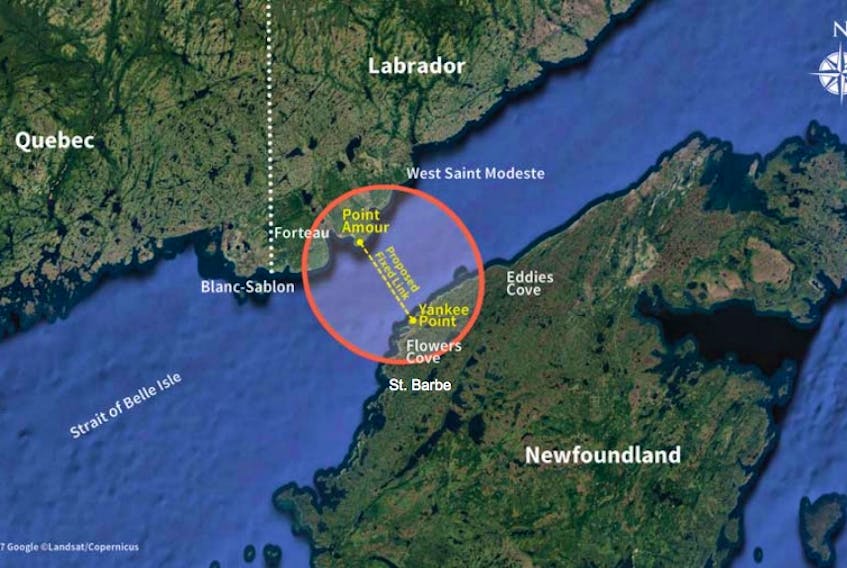Route NL-430. If you’re one of the hopelessly optimistic people who think $1.65 billion to connect Newfoundland to Labrador with an undersea rail tunnel is good idea, you might want to think about that road.
(First you have to consider the real price of the project, which is $2.767 billion. If you want to know why that’s the correct number, see Russell Wangersky’s column here.)
But back to Route NL-430.
The tunnel plan suggests that a rail tunnel would come ashore on the island of Newfoundland at Yankee Point, 25 kilometres north of St. Barbe.
From there, until it reached the Trans-Canada Highway at Deer Lake, all of the traffic would travel south on what is now NL-430 — in all, some 322.7 kilometres of narrow secondary road that winds through towns and highlands, edging along the ocean in many places and cutting directly through a national park.
Think about the Team Gushue Highway in St. John’s. The extension of that highway is now budgeted to cost $60.2 million by the time it’s done — and it’s only 7.3 kilometres long. That’s around $8.2 million per kilometre.
And it would be a substantial amount of traffic. The study that attempts to justify building the link suggests 60 per cent of the traffic that now uses the Marine Atlantic system would be diverted to the fixed link, bringing an exponential amount of traffic to NL-430.
The forecast is for 136,850 new private vehicles every year, and even more commercial traffic: 245,802 commercial vehicles.
With a combined total of more than 382,000 vehicles — and all of that before you add in the existing traffic on the route — it’s clear that there would have to be substantial road work done for the route to be anywhere close to safe. It’s closed regularly in the winter due to snowstorms, it’s narrow and its hills and turns are abrupt. It’s a tired two-lane secondary road with gravel shoulders. You can look at the government’s own Flower’s Cove traffic camera online to get an idea.
But let’s get back to that 322.7 kilometre number.
Think about the Team Gushue Highway in St. John’s. The extension of that highway is now budgeted to cost $60.2 million by the time it’s done — and it’s only 7.3 kilometres long. That’s around $8.2 million per kilometre.
Now, maybe Route 430 doesn’t have to be built to the same standard as Team Gushue, or to the standards of the divided portions of the Trans-Canada. If it was, building an entirely new 322.7 km divided highway would add $2.6 billion more to the public expense of the tunnel project.
The C.B.S. Bypass extension was finished in 2014: its 5.6 kilometres had a construction cost of $4.5 million per kilometer. To build a 322.7 km highway to that standard — two lanes, paved shoulders, limited passing zones — would carry a $1.5 billion price tag.
Did we mention that highway upgrading is not part of the $2.767 billion project cost?
The tunnel to Labrador is a pipe for trains. The project as a whole?
A pipe dream.









